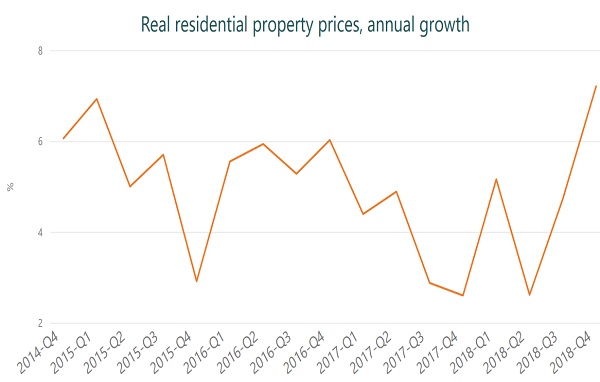 Credit: CSSF
Credit: CSSF
In the fourth quarter of 2018, real house prices grew at an annual rate of 7.2% in Luxembourg, according to data from Eurostat and the Commission de Surveillance du Secteur Financier (CSSF).
This growth rate represents the largest increase in housing prices recorded over the last five years whilst real economic growth stalled at 1.7%. Total mortgage credit as a share of GDP has also been continuously on the rise for the past three years (+10%), reaching 52% of nominal GDP in the fourth quarter of 2018.
In this context, the macroprudential policy division of the CSSF has started publishing a quarterly Real Estate Market Overview containing macroeconomic data on residential real estate in Luxembourg. It is aimed at providing a quick and up-to-date overview of the main aggregates in this area to foster transparent discussions on real estate issues. The data sources are major national and international institutions including central banks and statistical agencies. The monitor takes a macroprudential risk perspective, focussing on price developments, household debt and credit developments.
For July, the Overview has presented different vulnerabilities stemming from real estate developments in Luxembourg in the fourth quarter of 2018. Firstly, measures of residential property price overvaluation showed significant heterogeneity, ranging between -7% and 56% during this period. In addition, house affordability fell in the fourth quarter of 2018 while household indebtedness remained high in 2017, representing 171% of income.
Despite a fall in the share of loans granted with variable interest rates for house purchase, household interest rate risk in Luxembourg remained at an elevated level given historically low mortgage rates. Indeed, new mortgage credit with variable interest rates represented 43% of total mortgage credit in February 2019. Furthermore, bank exposure per capita to real estate increased by 20% in 2018 Q4 compared to last quarter.
Finally, the Overview highlighted that banks reported having unchanged lending standards in the second quarter of 2019.








